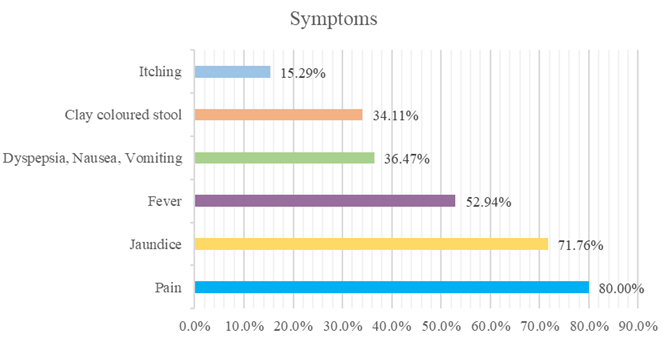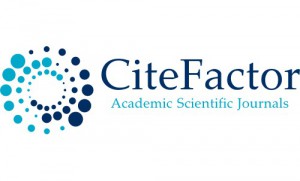An Analysis of Risk Factors and Clinical Outcomes of Choledocholithiasis in Patients at a Tertiary Care Hospital in Bangladesh.
Abstract
Background: Choledocholithiasis is a common biliary disorder characterized by the presence of stones in the common bile duct, leading to significant clinical complications and morbidity. This study aims to investigate the clinical profile, risk factors, and symptoms of patients diagnosed with choledocholithiasis at a tertiary care hospital in Bangladesh, with an emphasis on demographic patterns and associated comorbid conditions.
Methods: This cross-sectional study was conducted at Bangladesh Medical University (BMU) between July 2024 and December 2024, involving 170 patients diagnosed with choledocholithiasis. Data were collected through a detailed review of clinical records, which included demographic information, clinical features, lifestyle factors, comorbidities, and symptoms. Patients were also assessed for risk factors such as diet, physical activity, and body composition.
Results: The study sample primarily consisted of patients aged 41-60 years (27.65%), with a female predominance (58.83%). Common risk factors included a non-vegetarian diet (57.64%), a sedentary lifestyle (56.47%), and obesity (48.23%). Comorbidities, including diabetes mellitus (38.82%) and hypertension (32.94%), were also prevalent in the patient population. The most frequently reported symptoms were pain (80%), jaundice (71.76%), and fever (52.94%). Clinical signs, such as tenderness in the right hypochondriac region (91.76%) and icterus (89.41%), were predominant.
Conclusion: This study provides a comprehensive overview of the clinical characteristics and risk factors associated with choledocholithiasis in Bangladesh. The findings suggest the need for targeted interventions to address lifestyle factors, manage comorbidities, and consider gender-based risk stratification in clinical practice. Further studies are needed to assess the long-term impact of these factors on disease progression and patient outcomes.
Downloads
References
Schirmer, B. D., Winters, K. L., & Edlich, R. (2005). Cholelithiasis and cholecystitis. Journal of long-term effects of medical implants, 15(3), 329- 338.
Tazuma, S. (2006). Epidemiology, pathogenesis, and classification of biliary stones (common bile duct and intrahepatic). Best practice & research Clinical gastroenterology, 20(6), 1075-1083.
Mund, R. R., Priyadarshini, P., & Meher, S. K. (2017). Study on aetiopathogenesis and management of common bile duct stones in southern part of Odisha, India. International Journal of Medical and Health Research, 3(2), 74- 77.
Petelin, J. B. (2002). Surgical management of common bile duct stones. Gastrointestinal endoscopy, 56(6), S183-S189.
Blumgart, L. H., & Fong, Y. Surgery of Liver and Biliary Tract. 3rd edition, 1, 737-738.
Tandon, R. K. (2000). Prevalence and type of biliary stones in India. World J Gastroenterol Suppl, 4, 4-5.
Manes G, Paspatis G, Aabakken L, et al. Endoscopic management of common bile duct stones: European Society of Gastrointestinal Endoscopy (ESGE) guideline. Endoscopy. 2019;51(5):472-91.
Buxbaum JL, Abbas Fehmi SM, Sultan S, et al. ASGE guideline on the role of endoscopy in the evaluation and management of choledocholithiasis. Gastrointest Endosc. 2019;89(6):1075-105.
Williams E, Beckingham I, El Sayed G, et al. Updated guideline on the management of common bile duct stones (CBDS). Gut. 2017;66(5):765-82.
Anderson MA, Fisher L, Jain R, et al. Complications of ERCP. Gastrointest Endosc. 2012;75(3):467-73.
Dumonceau JM, Andriulli A, Elmunzer BJ, et al. Prophylaxis of post-ERCP pancreatitis: European Society of Gastrointestinal Endoscopy (ESGE) Guideline-updated June 2014. Endoscopy. 2014;46(9):799-815.
Itoi T, Ryozawa S, Katanuma A, et al. Japan Gastroenterological Endoscopy Society guidelines for endoscopic papillary large balloon dilation. Dig Endosc. 2018;30(3):293-309.
Kim SB, Kim KH, Kim TN. Comparison of outcomes and complications of endoscopic common bile duct stone removal between asymptomatic and symptomatic patients. Dig Dis Sci. 2016;61(4):1172-7.
Xu XD, Qian JQ, Dai JJ, et al. Endoscopic treatment for choledocholithiasis in asymptomatic patients. J Gastroenterol Hepatol. 2020;35(1):165-9.
Wani, N. A., Khan, Z. A., Ahmad, H. V., & Wani, K. A. (1995). Experience with calculus biliary tract surgery. Ind J Surg, 57, 181-188.
Tandon, R. K., Saraya, A., Paul, S., & Kapur, B. M. L. (1996). Dietary habits of gallstone patients in Northern India: a case control study. Journal of clinical gastroenterology, 22(1), 23-27. 10.
Selvaraju, R., Raman, R. G., Thiruppathi, G., & Valliappan, R. (2010). Epidemiological study of gallstone in Cuddalore District. Int J Pharm Tech Res, 2(2), 1061-1067.
Vasavada, D. P., & Khanderia, R. (2019). A Study of Clinical Outcome in 30 Patients of Common Bile Duct Stone. International Journal of Contemporary Medical Research, 6(4), D1-D5. 12.
Chhoda, A., Jain, D., & Singhal, S. (2017). Sexrelated differences in predicting choledocholithiasis using current American Society of Gastrointestinal Endoscopy risk criteria. Annals of gastroenterology, 30(6), 682-687.
Ravi, M. J. (2019). Clinical profile of patients with common bile duct stones attending tertiary care hospital. International Journal of Surgery, 3(2), 73- 76. 14.
Tozatti, J., Mello, A. L. P., & Frazon, O. (2015). Predictor factors for choledocholithiasis. ABCD. Arquivos Brasileiros de Cirurgia Digestiva (São Paulo), 28(2), 109-112.



























